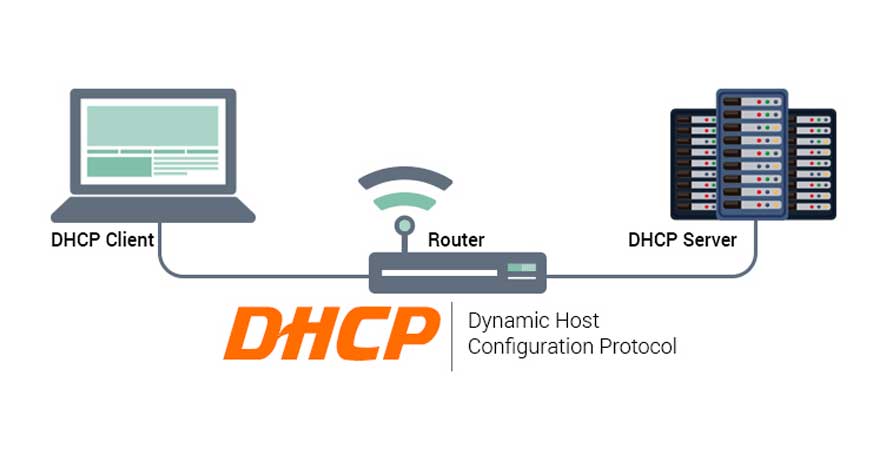No products in the cart.
Dynamic Host Configuration Protocol(DHCP) Leave a comment
The Dynamic Host Configuration Protocol (DHCP) is a standardized network protocol used on Internet Protocol (IP) networks.
The DHCP is controlled by a DHCP server that dynamically distributes network configuration parameters, such as IP addresses, for interfaces and services. A router or a residential gateway can be enabled to act as a DHCP server. A DHCP server enables computers to request IP addresses and networking parameters automatically, reducing the need for a network administrator or a user to configure these settings manually. In the absence of a DHCP server, each computer or other device (eg., a printer) on the network needs to be statically (ie., manually) assigned to an IP address.
TCP/IP defines how devices on one network communicate with devices on another network. A DHCP server can manage TCP/IP settings for devices on a network, by automatically or dynamically assigning Internet Protocol (IP) addresses to the devices. As of 2011, networks ranging in size from home networks to large campus networks and regional Internet service provider networks commonly use DHCP.[1] Most residential network routers receive a globally unique IP address within the provider network. Within a local network, a DHCP server assigns a local IP address to each device connected to the network.
The DHCP operates based on the client–server model. When a computer or other device connects to a network, the DHCP client software sends a broadcast query requesting the necessary information. Any DHCP server on the network may service the request. The DHCP server manages a pool of IP addresses and information about client configuration parameters such as default gateway, domain name, the name servers, and time servers. On receiving a request, the server may respond with specific information for each client, as previously configured by an administrator, or with a specific address and any other information valid for the entire network and for the time period for which the allocation (lease) is valid. A client typically queries for this information immediately after booting, and periodically thereafter before the expiration of the information. When a DHCP client refreshes an assignment, it initially requests the same parameter values, but the DHCP server may assign a new address based on the assignment policies set by administrators.
On large networks that consist of multiple links, a single DHCP server may service the entire network when aided by DHCP relay agents located on the interconnecting routers. Such agents relay messages between DHCP clients and DHCP servers located on different subnets.
Depending on implementation, the DHCP server may have three methods of allocating IP addresses:
Dynamic allocation
A network administrator reserves a range of IP addresses for DHCP, and each DHCP client on the LAN is configured to request an IP address from the DHCP server during network initialization. The request-and-grant process uses a lease concept with a controllable time period, allowing the DHCP server to reclaim (and then reallocate) IP addresses that are not renewed.
Automatic allocation
The DHCP server permanently assigns an IP address to a requesting client from the range defined by the administrator. This is like dynamic allocation, but the DHCP server keeps a table of past IP address assignments, so that it can preferentially assign to a client the same IP address that the client previously had.
Manual allocation (commonly called static allocation)
The DHCP server is disabled and the administrator allocates a private IP address based on a preconfigured mapping to each client’s MAC address. This feature is variously called static DHCP assignment by DD-WRT, fixed-address by the dhcpd documentation, address reservation by Netgear, DHCP reservation or static DHCP by Cisco and Linksys, and IP address reservation or MAC/IP address binding by various other router manufacturers.
DHCP is used for Internet Protocol version 4 (IPv4), as well as for IPv6. While both versions serve the same purpose, the details of the protocol for IPv4 and IPv6 differ sufficiently that they may be considered separate protocols.[2] For the IPv6 operation, devices may alternatively use stateless address autoconfiguration. IPv6 hosts may also use link-local addressing to achieve operations restricted to the local network link.



